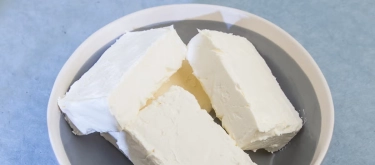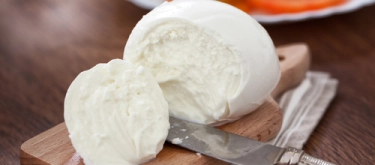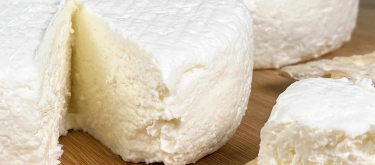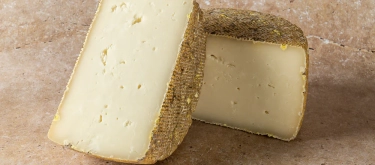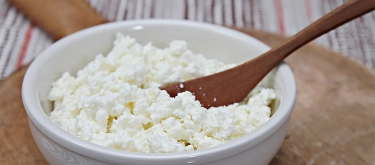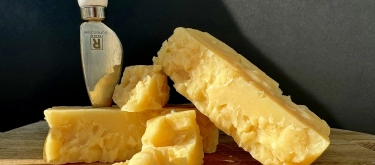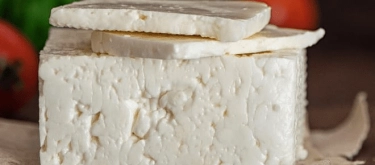Caciotta Cheese: Taste Profile, Aroma, Benefits and Health Risks
Caciotta cheese is a soft, semi-soft Italian cheese celebrated for its mild, creamy flavor and versatile character. Traditionally produced in various regions of Italy, this cheese boasts a delicate balance of buttery richness and subtle tang, making it an excellent choice for both casual snacking and refined culinary applications. This article provides a comprehensive sensory description of Caciotta cheese—including its taste, aroma, texture, and appearance—followed by an in-depth flavor analysis, diverse culinary applications, guidelines for selection and storage, nutritional insights, and key dietary considerations.
Caciotta cheese is an animal-derived dairy product and is not suitable for vegans. It is naturally gluten-free and offers a good source of protein and calcium. Enjoy as part of a balanced diet, mindful of its fat content.
What does Caciotta Cheese taste like?
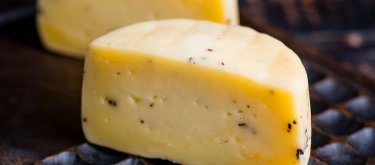
Complete Sensory Description
Taste:
Caciotta cheese greets the palate with a soft, creamy flavor that is both mild and subtly tangy. The initial sensation is one of gentle sweetness and buttery richness, accented by a whisper of earthiness that deepens as the cheese lingers on the tongue. This balanced flavor profile makes it approachable and versatile, enhancing both simple and complex dishes.
Aroma:
The aroma of Caciotta is fresh and inviting, exuding a milky, slightly grassy scent with hints of cream and delicate herbal nuances. This subtle bouquet prepares the senses for the mild yet satisfying flavor to follow.
Texture:
Caciotta boasts a tender, smooth texture that ranges from creamy to semi-soft. When young, it is pliable and spreadable; with slight aging, it develops a gentle firmness and a light, crumbly character without losing its inherent creaminess.
Appearance:
Typically pale in color, Caciotta features a creamy white to light yellow interior with a soft, edible rind. Its unassuming, rustic appearance is a testament to its artisanal origins, lending an authentic charm to any dish.
In-Depth Flavor Analysis
- Buttery and Mild:
The dominant note of Caciotta is its buttery creaminess that sets a soft, comforting foundation. - Subtle Tang:
A delicate tang emerges, balancing the inherent sweetness and adding a layer of complexity. - Earthy Undertones:
Hints of earthiness and mild herbal nuances contribute to its well-rounded profile. - Evolving Character:
As the cheese matures slightly, its flavor deepens, offering a richer and slightly more pronounced taste while retaining its overall mildness.
Culinary Applications
- Spread and Appetizers:
Enjoy Caciotta on fresh bread, crackers, or crostini as a simple yet elegant appetizer. - Salads and Light Dishes:
Cube or slice it into salads to add a creamy contrast to crisp greens and vibrant vegetables. - Sandwiches and Paninis:
Its mild flavor makes it an ideal filling for sandwiches, enhancing both taste and texture. - Cooking and Baking:
Use Caciotta in pasta dishes, risottos, or baked recipes where its creaminess can be melted into sauces or incorporated into savory pies. - Cheese Boards:
Serve as part of a curated cheese board paired with fruits, nuts, and a drizzle of honey to accentuate its gentle flavor.
Selection and Storage
Selecting Caciotta Cheese:
- Look for a uniform, creamy interior with a clean, intact, edible rind.
- Choose cheese from reputable producers to ensure freshness and quality.
Storage Recommendations:
- Store Caciotta in the refrigerator at temperatures between +2°C and +4°C (36°F–39°F), ideally in its original packaging or wrapped in parchment paper inside an airtight container.
- Consume within 1–2 weeks of purchase for optimal taste and texture.
- Allow the cheese to rest at room temperature for about 20 minutes before serving to enhance its flavor and spreadability.
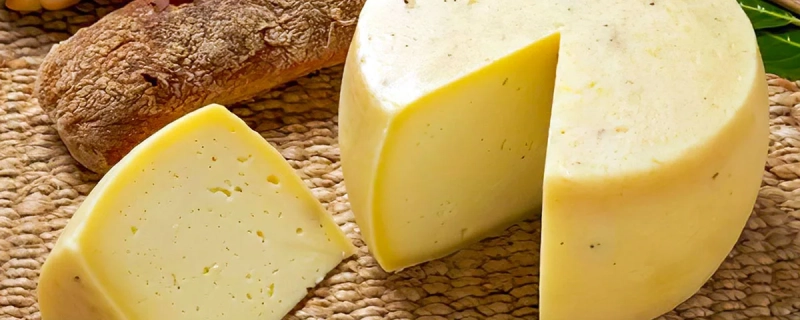
Quick Facts
- Artisanal Charm:
Caciotta is known for its mild, creamy flavor and versatile use in various dishes. - Nutrient-Rich:
Provides high-quality protein, calcium, and essential vitamins. - Varied Texture:
Ranges from soft and spreadable when young to slightly firm with a light crumble as it ages. - Gluten-Free:
Naturally free of gluten, making it suitable for those with dietary restrictions. - Rustic Appearance:
Features a soft, edible rind and a creamy interior that speak to its traditional production methods.
Health Benefits of Caciotta Cheese
- Bone Support:
Rich in calcium and vitamin D, it contributes to maintaining strong bones and teeth. - Protein Source:
High-quality protein aids in muscle repair and overall body maintenance. - Digestive Comfort:
Its soft, easily digestible nature makes it suitable for a balanced diet. - Vitamins and Minerals:
Provides a spectrum of micronutrients, including B vitamins and phosphorus, essential for energy and metabolic health. - Moderate Indulgence:
While nutrient-dense, enjoying Caciotta in moderation supports a balanced approach to dietary fat intake.
Additional Nutritional Insights
- Balanced Macro Profile:
Composed of a harmonious blend of proteins and fats that offer both energy and satiety. - Low Caloric Density:
Despite its richness, Caciotta is relatively low in calories, making it a smart choice for controlled diets. - Micronutrient Contribution:
Delivers trace minerals such as zinc and magnesium, which support immune function and overall vitality. - Minimal Additives:
Often produced with traditional methods, preserving natural flavors without excessive additives. - Digestive Friendly:
Its mild nature ensures it is gentle on the stomach and complements a varied diet.
How to Enjoy Caciotta Cheese
- On a Cheese Board:
Pair it with fresh fruit, nuts, and a drizzle of honey for an elegant appetizer. - In Sandwiches:
Use as a creamy filling in paninis or open-faced sandwiches to add a subtle, indulgent flavor. - In Salads:
Dice or slice and mix into green salads for a soft, tangy contrast to crunchy vegetables. - As a Cooking Ingredient:
Incorporate into pasta sauces, risottos, or baked dishes where its creamy texture can meld with other flavors. - Warm Spreads:
Serve slightly warmed to enhance its smoothness, perfect for spreading on artisanal bread.
Harm and Dietary Considerations
- Animal-Derived:
Caciotta cheese is not suitable for vegans. - Fat Content:
Though relatively low in calories, it does contain saturated fat, so moderation is key for those with heart health concerns. - Storage Sensitivity:
Ensure proper refrigeration to maintain its quality and avoid spoilage. - Allergic Considerations:
Individuals with dairy allergies should avoid Caciotta. - Balanced Diet:
Enjoy as part of a varied diet to maximize nutritional benefits without overindulgence.
Conclusion
Caciotta cheese offers a gentle, creamy delight that balances mild sweetness with a subtle tang and earthy undertones. Its soft texture and versatile flavor make it a cherished ingredient in both everyday meals and gourmet creations. Whether spread on bread, layered in a salad, or melted into a savory dish, Caciotta transforms simple recipes into culinary experiences that celebrate tradition and innovation alike.
References
- McGee, H. (2004). On Food and Cooking: The Science and Lore of the Kitchen. New York: Scribner.
- Dairy Research Institute. (2016). "Traditional Italian Cheeses: Nutritional and Culinary Perspectives."
- Rossi, F. (2018). "Caciotta: An Exploration of a Versatile Italian Cheese." Journal of Culinary Arts, 12(3), 201–210.
